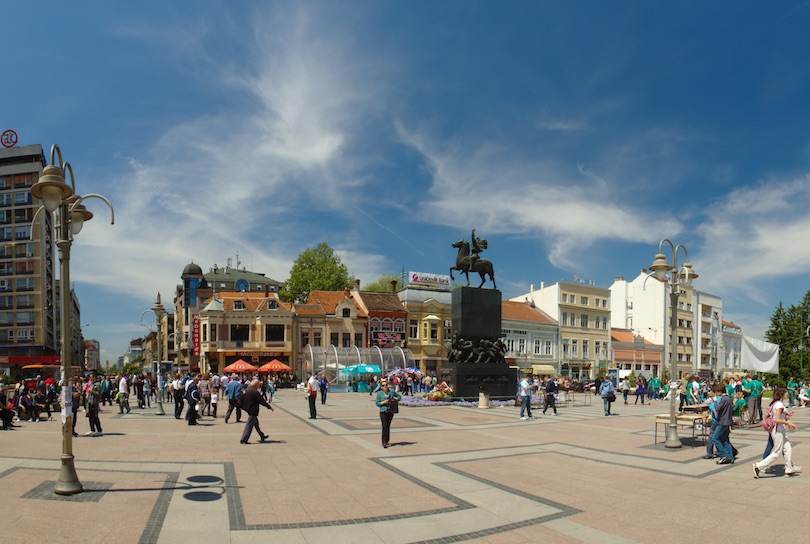Serbia, officially the Republic of Serbia, is a landlocked country in Southeast Europe, at the crossroads of the Pannonian Plain and the Balkans.
Approximately around 6,500 years BC, during the Neolithic, the Starčevo, and Vinča cultures existed in the region of modern-day Belgrade. They dominated much of Southeastern Europe (as well as parts of Central Europe and Asia Minor). Several important archaeological sites from this era, including Lepenski Vir and Vinča-Belo Brdo, still exist near the banks of the Danube.
Serbia is not a mass-tourism destination but nevertheless has a diverse range of touristic products. In 2019, total of over 3.6 million tourists were recorded in accommodations, of which half were foreign.Foreign exchange earnings from tourism were estimated at $1.5 billion.
Tourism is mainly focused on the mountains and spas of the country, which are mostly visited by domestic tourists, as well as Belgrade and, to a lesser degree, Novi Sad, which are preferred choices of foreign tourists (almost two-thirds of all foreign visits are made to these two cities). The most famous mountain resorts are Kopaonik, Stara Planina and Zlatibor. There are also many spas in Serbia, the biggest of which are Vrnjačka Banja, Soko Banja, and Banja Koviljača. City-break and conference tourism is developed in Belgrade and Novi Sad. Other touristic products that Serbia offer are natural wonders like Đavolja varoš, Christian pilgrimage to the many Orthodox monasteries across the country and the river cruising along the Danube. There are several internationally popular music festivals held in Serbia, such as EXIT (with 25–30,000 foreign visitors coming from 60 countries) and the Guča trumpet festiva
1.Nis
everal Roman emperors were born in Niš or used it as a residence: Constantine the Great, the first Christian emperor and the founder of Constantinople, Constantius III, Constans, Vetranio, Julian, Valentinian I, Valens; and Justin I. Emperor Claudius Gothicus decisively defeated the Goths at the Battle of Naissus (present-day Niš). Later playing a prominent role in the history of the Byzantine Empire, the city’s past would earn it the nickname Imperial City.
Today, Niš is one of the most important economic centers in Serbia, especially in the electronics, mechanical engineering, textile, and tobacco industries. Constantine the Great Airport is Niš’s international airport. The city is also the seat of the University of Niš, the Eparchy of Niš and the Command of Serbian Army.
In 2013, the city was host to the celebration of 1700 years of Constantine’s Edict of Milan.
Niš Fortress – The remaining fortification was built by the Turks, and dates from the first decades of the 18th century (1719–23). It is situated in the city center.
The fortress-cafes – They are situated near Stambol gate (the main gate of the fortress).
Mediana – Archeological site, an Imperial villa, from the late Roman period on the road leading to Sofia, Bulgaria, near EI Nis.
Niška Banja (Niš spa) – A very popular spa during the summer season. It is 10 km (6 mi) from city center on the road leading to Sofia, in the bottom of Suva Planina Mountain.
Buildings in Niš are constantly being built. Niš is the second city in Serbia after Belgrade by number of high-rises.The Ambassador Hotel is one of the tallest buildings in Niš, but there are also other buildings like TV5 Tower.
2.Devil’s Town
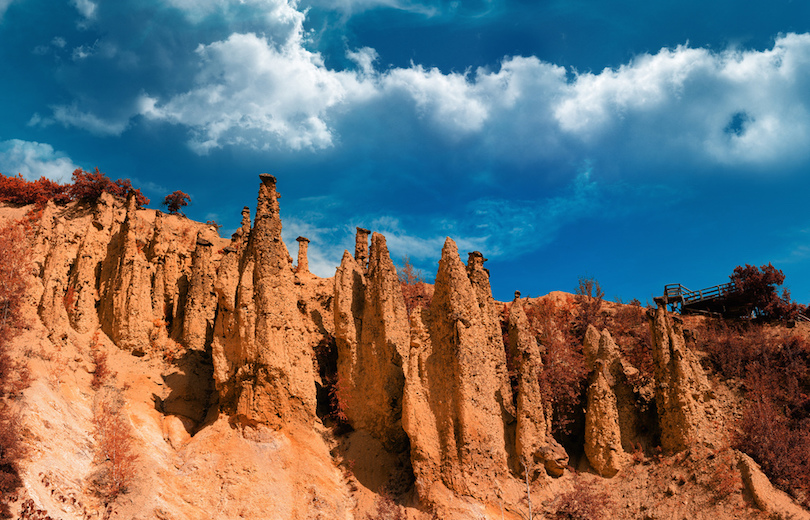
Đavolja Varoš features 202 exotic formations described as earth pyramids or “towers”, as the locals refer to them. They are 2 to 15 m (6 ft 7 in to 49 ft 3 in) tall and 4 to 6 m (13 to 20 ft) wide at the base. These formations were created by strong erosion of the soil that was scene of intense volcanic activity millions of years ago. Most of the towers have “caps” or “heads” of andesite, which protect them from further erosion. Volatile volcanic history left marks in the multicolored rocks in the towers hinterlands. However, Đavolja Varoš in its modern form is a relatively new feature. As the inhabitants of the surrounding region were cutting down the forests, they enabled for the precipitation to erode the rocks. The area beneath the towers is called The Hell gully (Paklena jaruga) and the surrounding terrain is a location of the mine shafts from the medieval Nemanjić Serbia.
A natural spring is located beneath the formations and has a high mineral concentration. There are two springs: Đavolja voda (Devil’s Water), with extremely acidic water (pH 1.5) and high mineral concentration (15 g/l of water), and Crveno vrelo (Red Well). The unusually pungent spring waters were examined for the first time in 1905 by Aleksandar Zega, founder of the Serbian Chemical Society.
Erosion is responsible for one of Serbia’s most majestic rock formations, Devil’s Town, which got its name from the strange rock shapes. Local legend says the rocks are members of a wedding party petrified by the devil Extremely acidic water, known as Djavolja voda, or devil’s water, which also contributed to this geologic phenomenon.
3.Kopaonik National Park
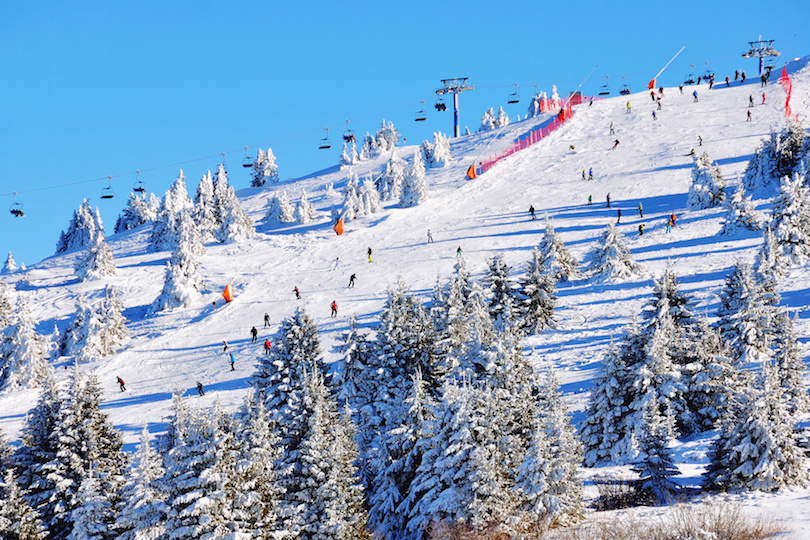
Kopaonik is a mountain range located in Serbia and Kosovo. The highest point is the Pančić’s Peak with 2,017 m. The central part of the Kopaonik plateau was declared a national park in 1981 which today covers an area of 121.06 km².
Stretching for 75 km (47 mi) in the north-south direction, between the rivers of Lab and Sitnica on the south and Jošanica on the north, Kopaonik is one of the largest and longest mountains in Serbia. It belongs to the region of Raška. The Kopaonik mountain massif (Kopaoničke planine) includes the mountains of Kopaonik, Željin, Goč and Stolovi. The Pančić’s Peak, with 2,017 m (6,617 ft), is the highest point of the mountain.
Kopaonik has a rich historical heritage. Oldest findings are from the Paleolithic and already show that local people used metals. Localities include Bela Stena, Veliki Krš and Jasova Bačija. Neolithic remains were discovered on the localities of Gornji Kaznovići (Rosulja and Lug), Greblje, Tomovićko Brdo and the Neolithic range of Beglučka.
It’s a great place to hike in the summer, with an extensive array of flora and fauna. The mountain also is known for its mineral wealth, with gold, silver, iron and zinc mined here in the past. The park also sports unique rock formations, many of which have names; hot springs; geysers and waterfalls.
4.Prizren
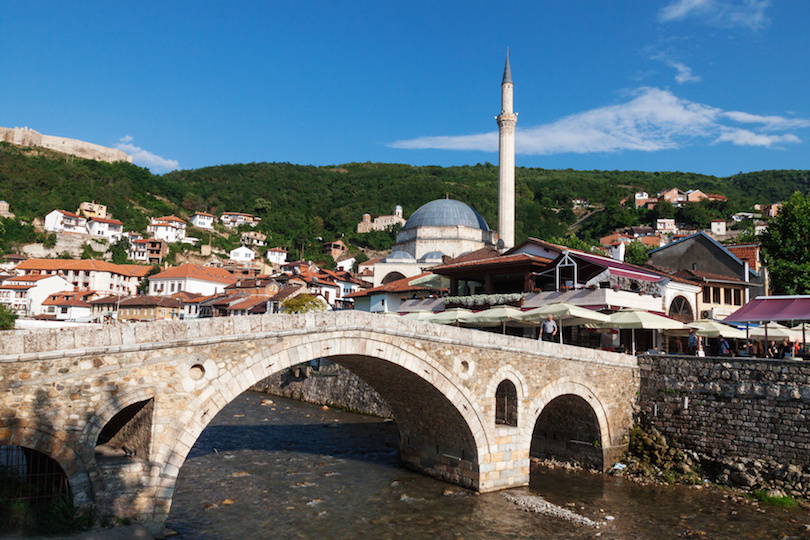
Prizren is the second most populous city and municipality of Kosovo and seat of the eponymous municipality and district. It is located on the banks of the Prizren River between the foothills of the Sharr Mountains in southern Kosovo.
Prizren is a good walking city, since most everything is close together. Several churches can be found in the city center, with the Church of Our Lady of Ljovis most notable, since it’s a magnificent example of medieval Serbian architecture.
The earliest archaeological find is the so-called Runner of Prizren which is a bronze figure of a running girl. A dealer sold it to the British Museum in 1876. According to the museum, the object was possibly made in Sparta between 520BC and 500BC. It may have arrived in Prizren as a gift or loot and used as a grave-god.
Prizren has been traditionally identified with Theranda, a town of the Roman era. Another location which may have been that of Theranda is present-day Suhareka as has been suggested in recent research. Archaeological research has shown that the site of the Prizren Fortress has had several eras of habitation since prehistoric times. In its lower part, material from the upper part of the fort has been deposited over the centuries. It dates from the Middle Bronze Age (c. 2000 BCE) to the late Iron Age (c. 1st century CE) and is comparable to the material found in the nearby prehistoric site in the village of Vlashnjë (~10 km west of Prizren). In 2005, prehistoric rock paintings in a ritual site related to the cycle of life were found near Vlashnjë. They represent the first find of prehistoric rock art in the region.
5.Studenica Monastery
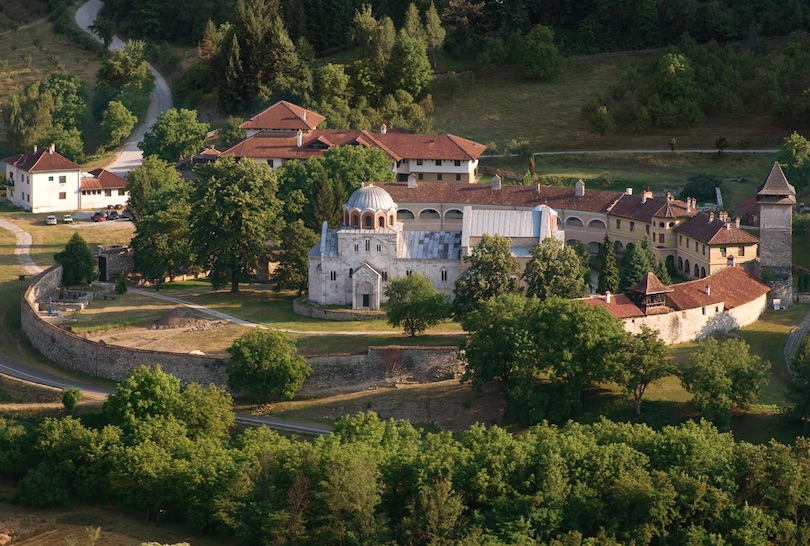
The Studenica Monastery, is a 12th-century Serbian Orthodox monastery situated 39 kilometres southwest of Kraljevo and 40.9 kilometres east of Ivanjica, in central Serbia. It is one of the largest and richest Serb Orthodox monasteries.
The complex of the Studenica monastery includes the Church of St. Nicholas, a small single-nave church frescoed inside with works from the 12th or possibly early 13th centuries. Between the Church of St. Nicholas and the King’s Church are the foundations of the church dedicated to St. John the Baptist. West of the Virgin’s Church, there is an old refectory made of rubble, built during the time of Archbishop Sava. Finally, on the western side of the monastery complex there is a bell tower, erected in the 13th century. There used to be a chapel inside; now, only fragments of frescoes can be seen there. Remains of fresco painting have also been numbered on the external part of the narthex, splendidly representing the Nemanjić dynasty genealogy. They obviously relate to the frescoes from the Virgin’s Church which date back to 1208-1209.
The Studenica Monastery, located in central Serbia, has plenty of wow! factor, starting with lush green grass and two white marble churches (Church of the King and Church of the Virgin). This 12th century monastery is best known, however, for its outstanding 13th and 14th century Byzantine frescoes, paintings and other ornate decorations that can be found in various churches at the monastery.
6.Zlatibor
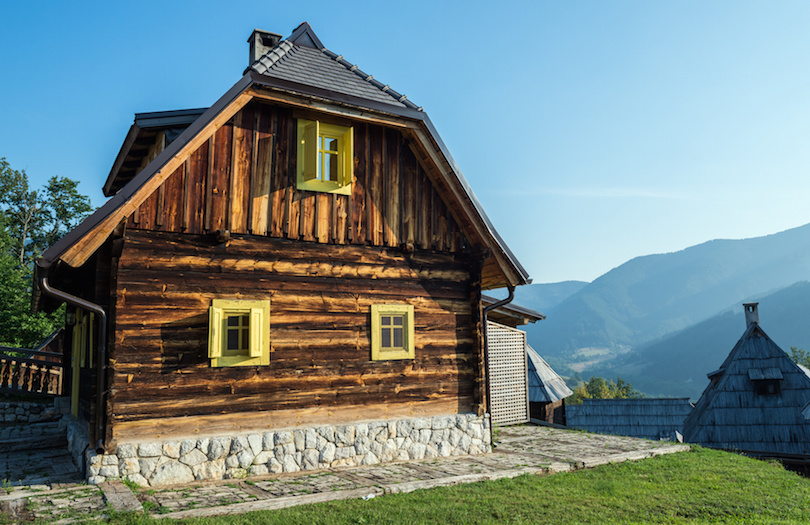
Zlatibor is a town located at namesake mountain in the municipality of Čajetina, western Serbia. As of 2011, the population of the town is 2,821 inhabitants. It is a popular tourist resort in Serbia. By road and rail it is connected with Užice and Nova Varoš.
The name Zlatibor came into the 18th century, but its etymology is uncertain. It probably stems from the Serbian words zlatni (golden) and bor (pine). Pinus sylvestris var. zlatiborica is a subspecies of pine originating from the mountain, and is endangered today. By 2021, there were no more remaining golden pine trees in its natural habitat. The last surviving tree cracked under the snow and was brought down by the storm on the Murtenica slope, in the Negbina village. Only grafted trees in urban areas survived, including towns of Zlatibor and Čajetina.
The region is very scenic, with large meadows and quaint historic villages. Old Wooden churches and an open air museum filled withhold houses are top attractions. After a day spent exploring the region, savor the flavors here of Zlatiborian prsuta, a dried meat, and slivovitz, a plum brandy.
7.Novi Sad
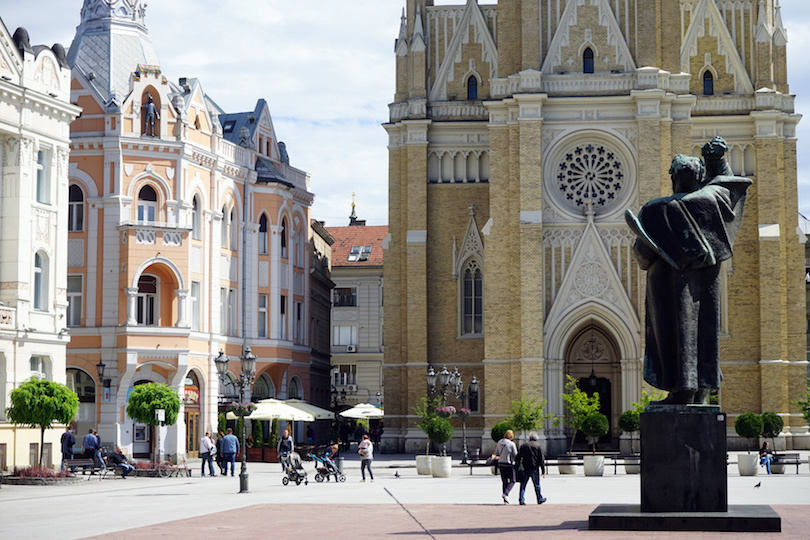
Novi Sad is a city in northern Serbia on the banks of the Danube River. Standing atop a riverside bluff, much of Petrovaradin Fortress dates to the 17th and 18th centuries, with an iconic clock tower and a network of tunnels. Across the river is the old quarter, Stari Grad, site of the Gothic Revival Name of Mary Church and the neo-Renaissance City Hall.
Novi Sad is a pretty city on the banks of the Danube River, home to one of the river’s best beaches. A young city by European standards (it was founded in the late 17th century), Serbia’s second largest city sports a laid-back atmosphere, with people relaxing in the many parks.
Since 2000, the number of tourists visiting Novi Sad each year has steadily risen. During the annual EXIT music festival in July, the city is full of young people from all over Europe. In 2017, over 200,000 visitors from 60 countries came to the festival, attending about 35 concerts.[45][46] Other events include shows and congresses organized by Novi Sad Fair, a local management company, bringing in many businesspersons and entrepreneurs to the city. Every May, Novi Sad is home to the largest agricultural show in the region, having attracted 600,000 attendees in 2005. The tourist port, near Varadin Bridge in the city centre, welcomes cruise boats from across Europe that travel the Danube river.
The most recognized structure in Novi Sad is the Petrovaradin Fortress, which dominates the skyline and also offers scenic views of the city. The nearby historic neighbourhood of Stari Grad has many monuments, museums, cafes, restaurants and shops. Also in the vicinity, is the Fruška Gora National Park, approximately 20 km (12 mi) from the city centre.
